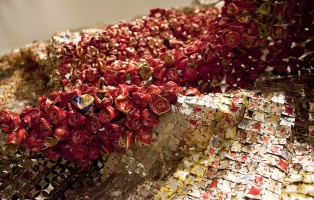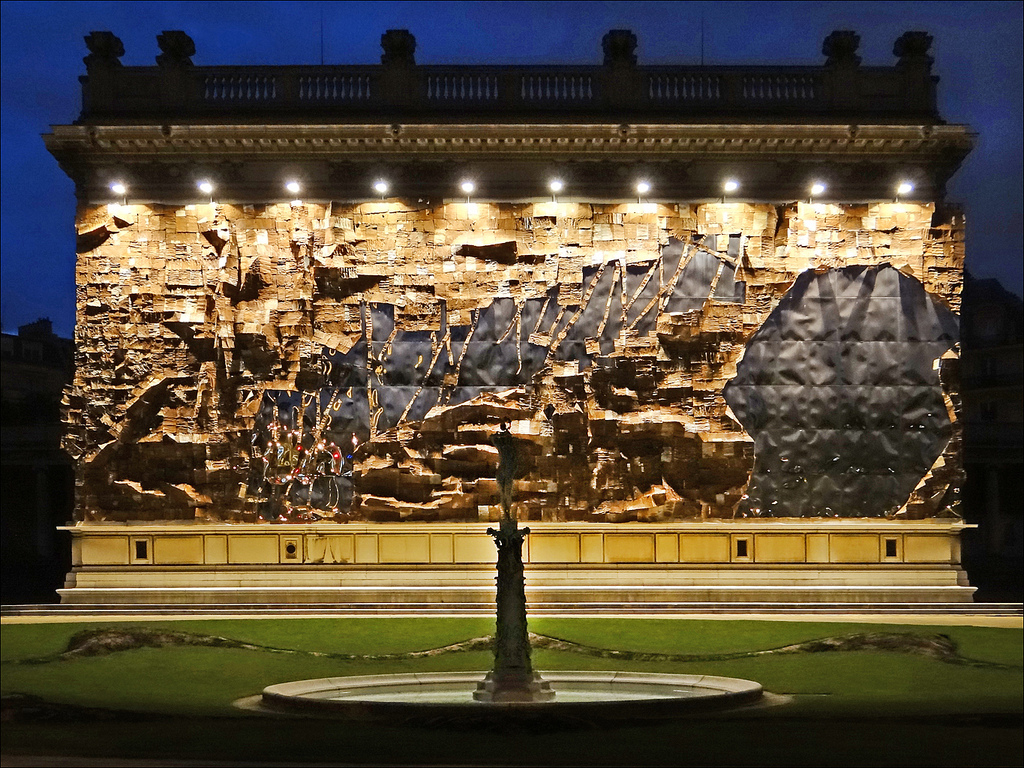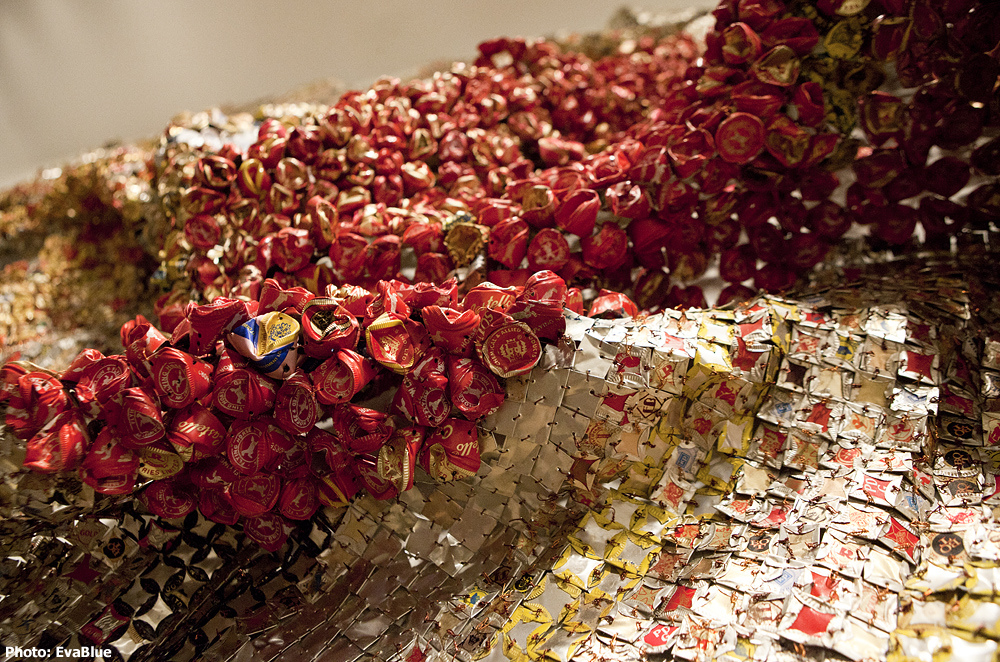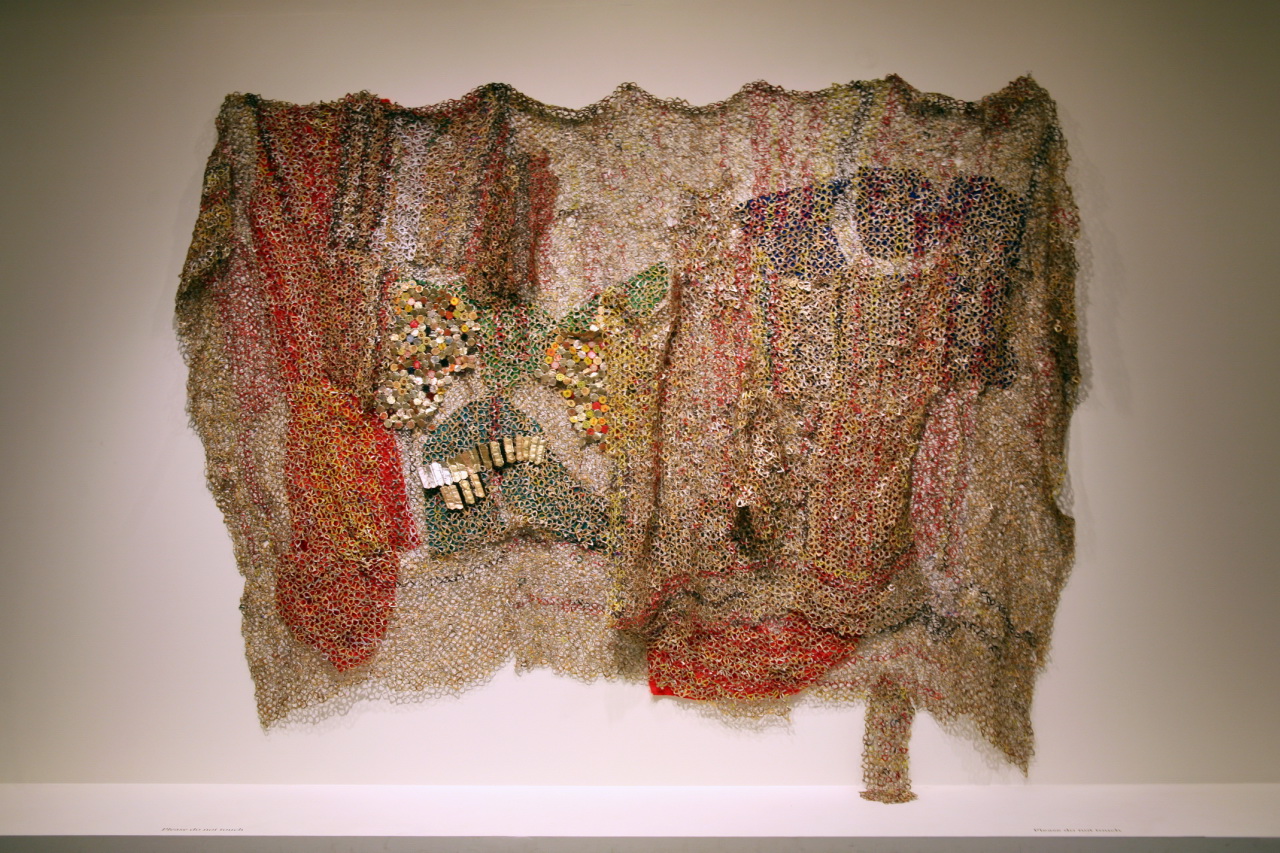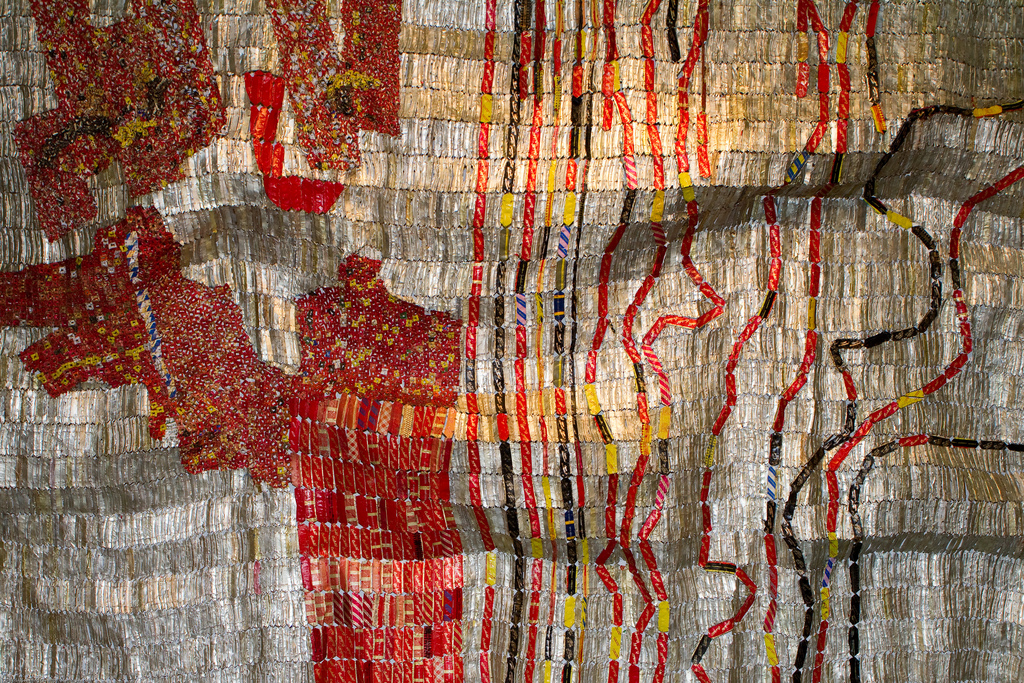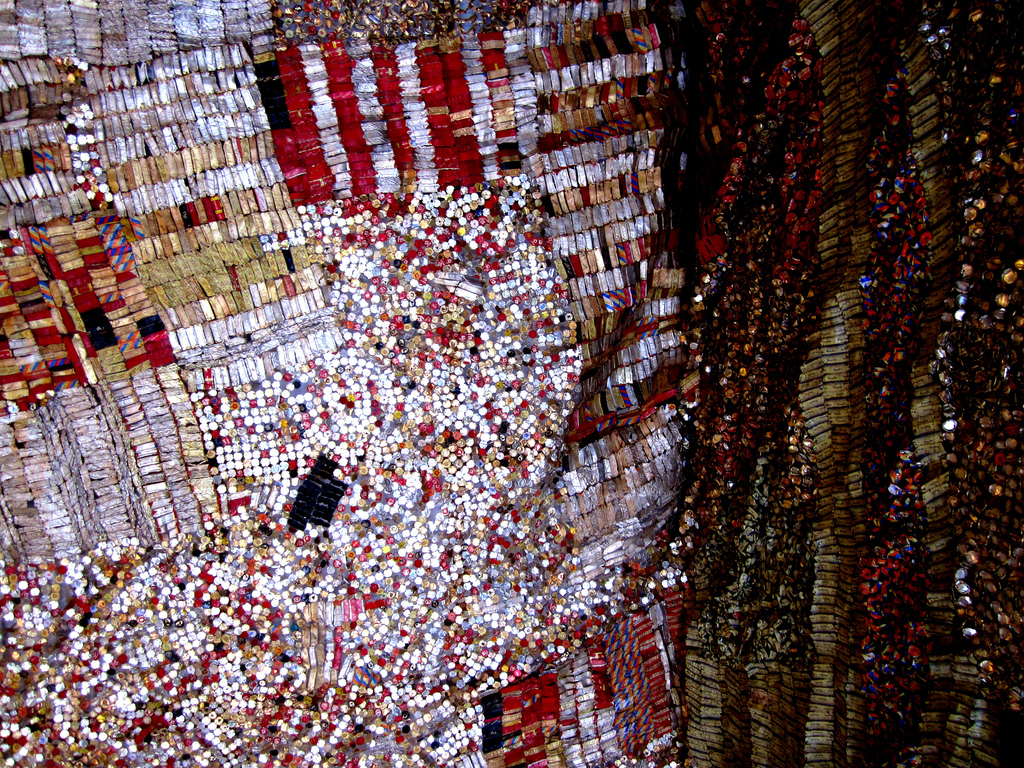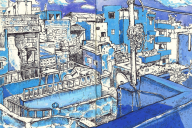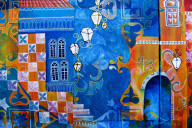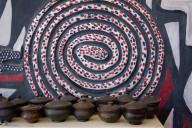The first time I saw El Anatsui’s work was in the British Museum (BM), looking somewhat out of place amongst the ancient African objects on display in the Sainsbury African Galleries. Alongside the collections of pottery and 20th century masks, El Anatsui’s magnificent world art textile piece, made from hundreds of colourful bottle tops, seemed to lose all meaning. Yes, El Anatsui is African, which seems to justify his placement in the BM’s African gallery, but he is also an artist, so why has his work been confined to a basement location instead of a contemporary art gallery?
My second sighting of an El Anatsui piece was in Paris, in the contemporary Pompidou Centre gallery. I had been there before, but had not come across El Anatsui’s work on my previous visit. It stood out on this visit because its surroundings were so much different to its display in the BM; instead of dim lighting offering an ‘other-worldly’ atmosphere, as is shown in the Sainsbury African Galleries, its placement in the Pompidou Centre alongside other world-famous modern artists in a white cube setting seemed to significantly elevate its status.
Who is El Anatsui?
El Anatsui is a sculptor, born in Ghana, but now living in Nigeria where he makes his artworks. He eloquently makes use of Africa’s rich history and vibrant culture to create forms that depict a fluid notion of Africa and serve to enrapture viewers from all over the world:
“When I set out to do work, I want something that would arrest people at least, draw them closer, so they can decide for themselves whether it’s really beautiful,” he said at a recent speech in Denver, Colorado, marking the opening of his retrospective exhibition there.
El Anatsui first appeared on the art scene in the early 2000s, where he amazed art lovers and collectors with his spectacular wall hangings made from bottle caps and copper wire. Each piece is an intricately thought out and put together masterpiece, offering an beautifully aesthetic work of art as well as a piece that is cut through with meaning. When he exhibits his work, El Anatsui presents curators with the chance to drape and fold each piece in any way they choose. This means that each exhibition of his work is never quite the same.
The philosophy behind El Anatsui’s work
It was El Anatsui’s school career that catapulted him into the realm of art. The curriculum in Ghana was predominantly from Europe, ignoring the fascinating history of African art. Along with his fellow students, El Anatsui began seeking out local craftsmen and market artists to explore the continent’s own traditions and it is from here that he draws his inspiration.
After scouring markets from some time, El Anatsui had built up his own collection of bottle tops and other ‘found’ objects to create work with. By using hot iron rods, he began to inscribe his finds with traditional symbols that represent abstract concepts present in Africa. None of El Anatsui’s pieces are created using the traditional medium of paint, and for good reason; he claims that it “has no history. It has nothing to it, it comes straight from the factory. So, why work with it?”
He retains the same philosophy he held shortly after graduating – that he would only use objects found in his own environment. Some might call this trash, but, if you’ve seen his pieces on display in some of the top galleries and museums in the world, you will realise that these are far from trash. They are in fact stunning works of art that embody current trends and traditions from contemporary Africa – something which the Western world rarely gets to see.

